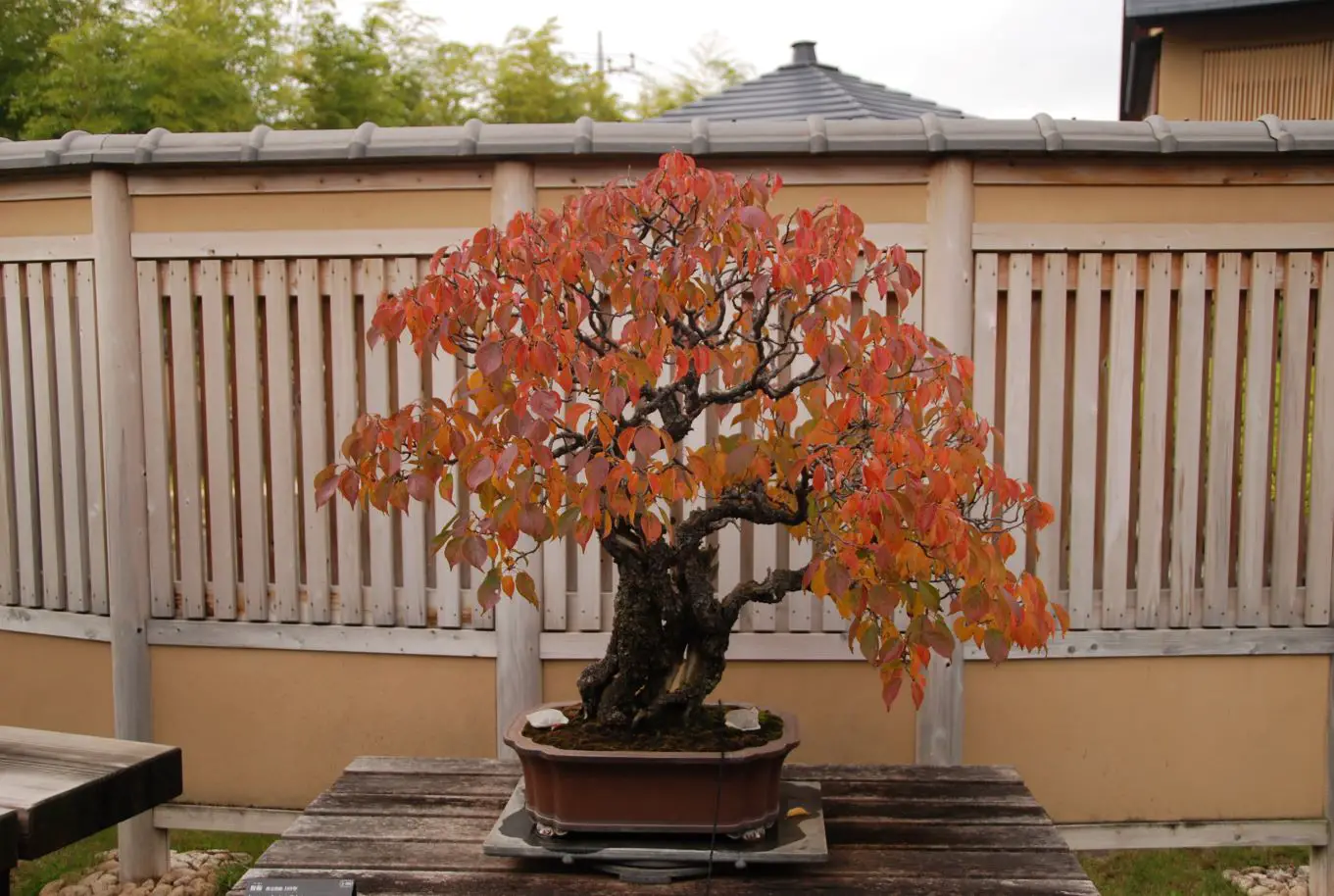Preparing bonsai for winter
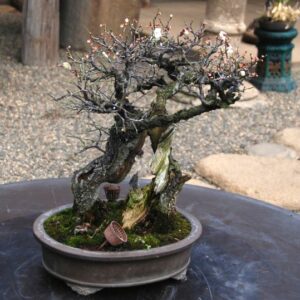
Why prepare for winter?
Winter is a hard season for any plants and demands a tailored approach for the preparation. For bonsai enthusiasts like us, ensuring the well-being of these miniature trees becomes a priority as the colder months approach.
Preparing bonsai for winter is crucial to protect them from freezing temperatures, which can severely harm their roots and branches. Proper winterization safeguards your trees against disease and pest vulnerabilities. It also promotes a flush of new shoots in spring.
Neglecting winter preparation can lead to long-term stress, reduced aesthetic appeal, and potential harm to the tree’s overall well-being.
Monitor temperature

Cold acclimation
As temperature drops, tree growth slows. Cool temperatures and shorter days initiate the first phase of hardening, allowing them to withstand a frost.
After the acclimation process has begun, do not move your trees around, especially
moving the trees from a cool outdoor environment to a warm indoors. If temperatures around the trees are above 68°F (20°C) for many days before winter, they might be less hardy and require cold protection.
Gradual acclimatization to cooler temperatures makes your bonsai cold hardy more effectively, minimizing the risk of cold damage.
Hardiness zone map
In the US, plants are ranked according to a USDA hardiness zone map. This map shows
which plants are most likely to thrive in a certain zone. It is helpful to see if your bonsai trees can thrive in your climate.
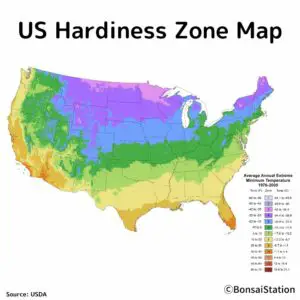
US Hardiness Zone Map
Though this USDA hardiness zone map can be a good reference for bonsai growers, it should be used with certain considerations, especially when applied to bonsai trees.
- It assumes the plants are grown from the ground. Container-grown plants like bonsai trees are usually more vulnerable to cold temperatures than those grown from the ground.
- It assumes the plant is established and growing well prior to experiencing the minimum cold temperatures for that zone.
- It assumes all plants within species act the same. All trees are unique and respond differently to cold temperatures, albeit slightly.
- It does not take into account how cultivars within a species can differ with respect to cold hardiness.
Winterization strategies
Fertilization
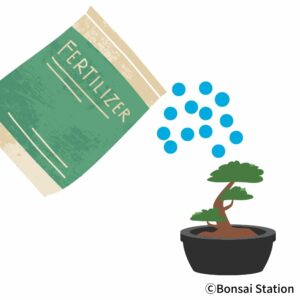
Is fertilization necessary?
Fall fertilization is necessary for bonsai trees to promote root development, preserve energy for winter resilience, and enhance spring flush. That said, you must manage nutrient levels without providing an oversupply or causing a deficiency.
An excess of nutrients, especially nitrogen in the fall, can extend the growth period and delay winterization, putting trees at risk of cold injury when unexpected frost occurs. Insufficient nutrients, on the other hand, lead to poor storage reserves for winter and reduced growth during bud break in spring.
The best fall fertilizer for bonsai
Nutrients flown into the foliage help the cold hardiness of both evergreen and deciduous bonsai trees.
Especially, adequate levels of potassium in foliage during the fall contribute to the trees’ winter hardiness. Also, increased phosphorus levels help trees store energy in the roots. Nitrogen levels, on the other hand, should be cut back as reduced nitrogen content helps signal to the tree that it’s time to slow down the growth and prepare for the winter.
Dyna-Gro Bonsai-Pro Liquid Fertilizer
This product contains less amount of nitrogen with emphasis on phosphorus and potassium (NPK ratio- 7:9:5). It helps maintain overall tree health without encouraging excessive growth, which is particularly beneficial as bonsai trees prepare for dormancy.
For fertilization application in the fall, please check the following post.
Watering
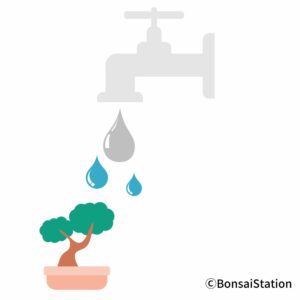
As winter’s chill descends, the rhythm of watering your bonsai orchestrates a delicate balance between providing essential moisture and respecting the tree’s preparation for the dormant state.
Watering as frequently and as abundantly as in the full growing season, in addition to sufficient nutrients in the soil, might lead to further growth late in the fall and subsequent frost injury.
That said, they might struggle more in winter if they are subject to very dry conditions. Lack of water in the fall means that the roots can store fewer nutrients, which affects the trees’ ability to grow new buds and shoots in the spring.
Pre-dormant phase demands a reduction in watering frequency. Your trees still need water to create energy but less and less as the tree’s metabolic processes slow down during this period. Monitor the moisture level carefully by touching the soil or weighing the pot, allowing the soil to half dry between watering sessions.
Be mindful of the individuality of trees. Each tree has different water needs. If your tree has grown significantly in the growing season, it can be root-bound and can’t absorb water much. Damaging roots by over- or under-watering in the fall can well be a death sentence for your tree.
Balance is key, and a mindful approach ensures the tree receives the hydration it needs without inducing stress. It is crucial to carefully manage how much water is given to ensure it’s just enough for the tree’s needs and helps it adapt to the cold weather.
If you are wondering how to adjust the watering frequency, the following post might be helpful.
Pruning
Pruning can be done in the fall but late-fall pruning can stimulate bud break that we don’t want, causing new growth that does not harden off before cold weather. It can also create wounds that do not close until active growth begins in spring.
It is advisable to avoid pruning within six weeks of the average first frost date.
If you do want to do the structural pruning with extensive cuts, it is best done at the very beginning or the end of winter when the trees are dormant.
Repotting
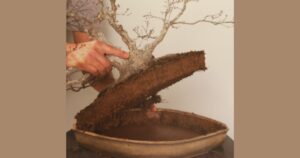
Fall repotting
While repotting is best done in spring, there are several advantages to fall repotting including maintaining tree health and avoiding disruption of the flowering cycle.
Make sure your trees are in good health, the temperature is warm enough and there are several weeks to a month for the tree to heal after repotting before the onset of winter.
In any event, root pruning should be minimal as roots are one of the energy sources of winter survival.
For a comprehensive guide to fall repotting, please check the following article.
Winter protection
If you repotted in the fall, your trees need protection from the cold when winter comes. Newly repotted bonsai trees are more vulnerable to frosts because of the stress from repotting. They also have to be cut off fertilizing them a couple of weeks after repotting, which will prevent them from storing energy for the cold months.
Consider moving them to a sheltered location or providing some form of frost protection like a cloth.
For ideas about winter protection for your bonsai trees, the following article might be helpful.

